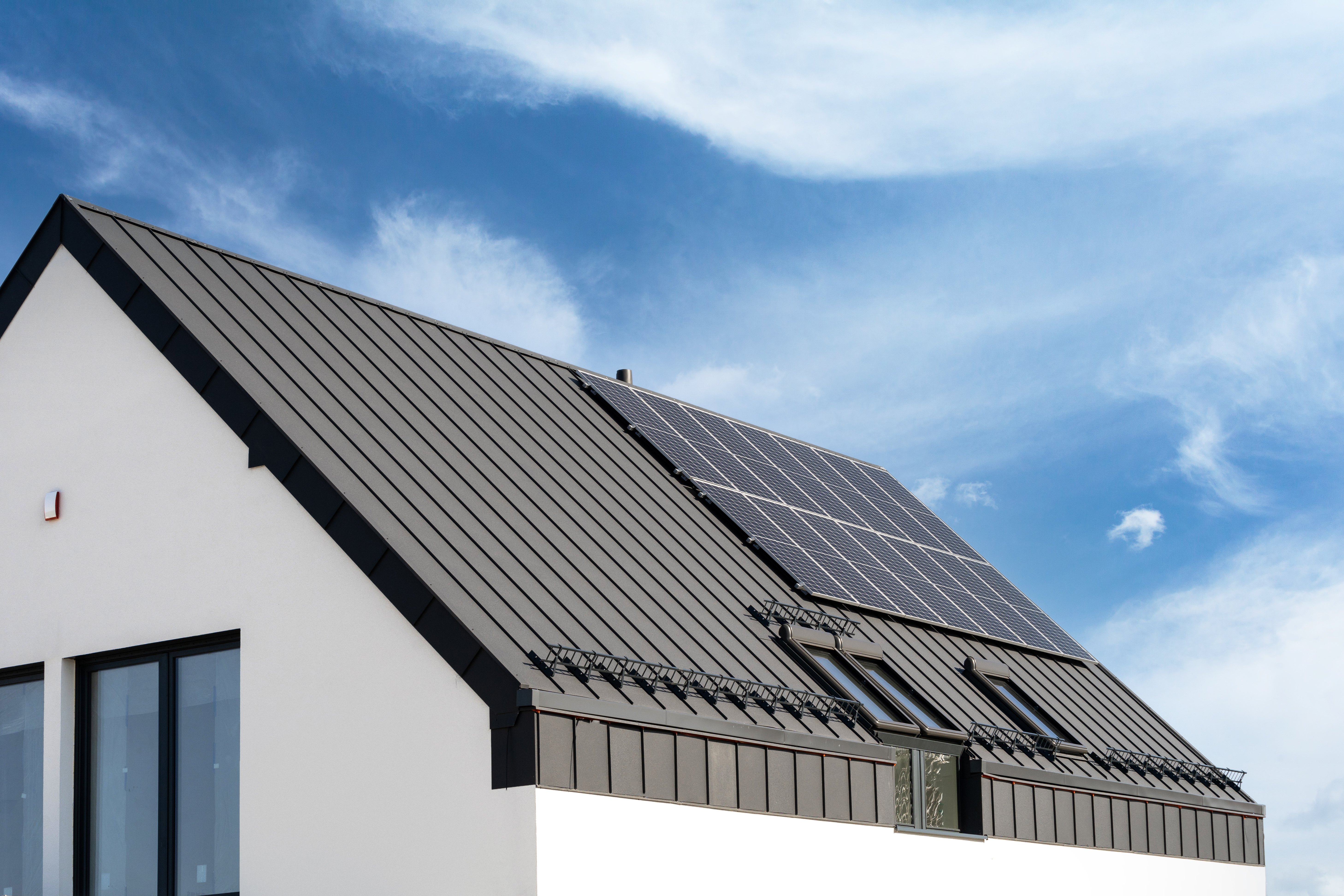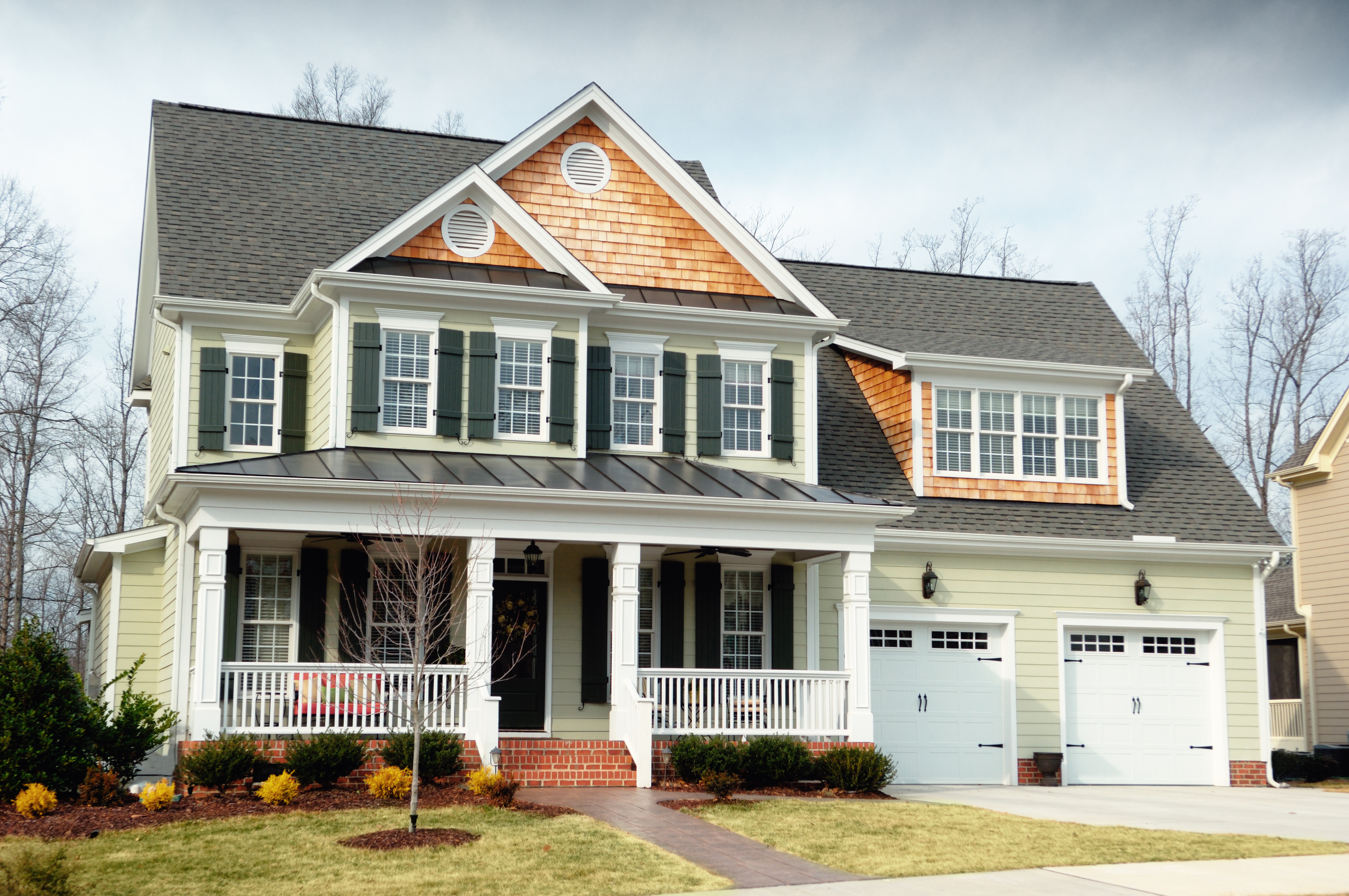
A metal roof can defend your home against Ohio’s varying weather conditions. Learn how much a metal roof costs in Columbus, OH.
If your new roof shingles look wavy, it could mean your roof needs a redo


New shingles may look wavy at first, but should not last longer than a few days.
Plywood or felt problems, expansion, misalignment, or poor craftsmanship could be the cause.
If your contractor’s quality is the problem, ask them to investigate and redo the work.
If you recently hired a roofing contractor to install a new roof or complete a roof repair, it is only natural that you would want the final product to look perfect. So, it may be disheartening to look up and ask yourself, "Wait, why do my new roof shingles look wavy?" If you notice that your new shingles are not lying flat, do not panic. There are a few reasons why this is normal—and a few ways to fix it. Read on for the lowdown on wavy roof shingles and what to do about them.
Shingles will normally look a little lumpy when first installed, but within a couple of warm days, they should lie flat. It is not normal for new shingles to look wavy for more than a few days and, if this is the case for your roof, contact your contractor to discuss it.

If your new roof looks uneven, with shingles appearing wavy, rippled, or bulging, there are some possible culprits. There may be problems with the plywood or felt underlayment that goes below the shingles, issues with expansion in extreme temperatures, misaligned shingles, or just generally poor craftsmanship.
Sheathing is a series of wooden four-by-eight-foot rectangles, often made of OSB or plywood, that carpenters or roofers attach to the house’s frame (joists and trusses). This layer of wood is used to attach the roof’s shingles. Ripples can happen if the sheathing is installed without a gap between the boards to allow for expansion and contraction, or if the builder left the sheathing exposed to the elements for too long without covering it with a protective underlayment. If this is the problem, look for ripples spaced evenly four to eight feet apart, to match the spacing of the plywood.
If the plywood beneath the shingles is fastened improperly, it means the fasteners missed the framing, so nothing is holding the plywood down and it could warp.
Another reason why sheathing boards can warp is if they were stored in a moist environment before being attached to the roof, or if the bare plywood was exposed to inclement weather and not shielded with plastic before the shingles were nailed down.
Leaving these framing and sheathing issues unfixed is mainly a cosmetic issue and should not affect the integrity of your roof.
“The only way to fix it is to redeck the house, which can be fairly expensive—coming in at about $1 to $1.50 per square foot,” says Ami Feller, Expert Review Board member and owner of Roofer Chicks in New Braunfels, Texas. “If you are getting a new roof and have noticed waves in your old roof, discuss it with your roofing contractor prior to installing a new roof.”
Typically, when completing a roof repair or replacing old shingles, a roofer will not remove more shingles than they can replace in the same day. This is because, when the felt underneath the shingles is exposed to wet weather or morning dew, it will cause the felt to wrinkle. It is important to note that you should never install a roof in the rain.
The wrinkles will lie flat if allowed to dry before installing the shingles, but if the roofer stapled down the new shingles over wet felt, the new shingles will likely look wavy. Damaged felt underlay is mainly a cosmetic concern.
If a roofer installs shingles when it is close to freezing outside (40 degrees Fahrenheit or below) and does not leave a gap, you may see a wave from expansion. Unfortunately, the only solution to fix this problem is removing and replacing the shingles, otherwise it could shorten the lifespan of your roof.
If you notice ripples like on a pond, that may be caused by improper stapling or nailing direction. Felt should always be stapled (or you can use plastic cap nails), and shingles should be nailed down in the direction they are being laid. If shingles are not nailed down properly, they can be blown off in strong winds or storms and that can cause leaky roof problems in the future.
A regular roof installation requires workers to remove the old roof before installing the new roof. But during re-roofing, the roofers install a layer of new shingles on top of the old ones without removing them first. This saves money upfront, but many things can go wrong later on, including wavy shingles. If you have wavy shingles after a re-roofing job, then it may be due to damage to your shingles from moisture, or because the original shingle layer is uneven.
When an attic has poor ventilation, excess moisture can get trapped inside the house. This moisture can warp the roof deck; and when this happens, the shingles will also warp and look wavy.
High winds can cause a lot of damage to your home, including to your roof shingles. Depending on the severity of the wind storm, it can cause shingles to crease. Beyond the creasing, the shingles may detach and fly away.
There are many possible reasons for wavy shingles, but if the roof installation was done well by a reputable contractor or company and your attic is properly ventilated, then it may be a manufacturer’s defect. In this case, the roofer should help you use the roof’s warranty to get another reinstallation done.
Are new roof shingles not lying flat? If the roof is only days old, then you should wait before calling your roofer. The wavy shingles should flatten on their own. But if it has been more than a few days and your roof is still wavy, it is time to call the roofer.
Even if you do not really care how it looks, you should still deal with it as quickly as possible. If the problem happens to be a manufacturer’s defect, you may get a new roof at no extra cost. If the problem is a structural issue, then you should take care of it right away, as this could lead to bigger and more costly repairs down the road.
Consider, too, that wavy shingles hurt your home’s curb appeal. Finally, if you are looking to sell the house, you may not be able to pass a home inspection because of your wavy roof.
A pro will need to figure out the root cause before repairing a wavy, uneven roof. Once identified, the root problem will get fixed ahead of the issue with your shingles. For example, if the wavy shingles are due to a re-roofing job, they will need to remove both layers of shingles and start anew. If the wavy shingles are due to poor installation methods, then your workers may be able to replace just the damaged portion of your roof.
If the roofing contractor does not adhere to the contract you agreed upon prior to starting on the roof, there are a few things you can do. First, you can ask them to investigate what is causing the wavy shingles and then repair the problem. Many contractors will redo the work for free if they made a mistake or provided subpar work in order to keep their license and maintain their business’s reputation.
If, however, the contractor does not call you back or refuses to redo the job, you can start with leaving an online review to let other homeowners know about the experience. You may also need to gather as much related documentation as you can and consult an attorney to explore potential legal options.
Before calling a pro, you should learn about the roof replacement process to ensure you can ask all the right questions so the project goes smoothly. Make sure to look at reviews for local roofing companies near you to see what other homeowners thought of their quality, and then document everything in writing once you find the right company.
Remember, a quality roofer will have proper qualifications. They will hold the right licenses; offer reasonable roof replacement costs, according to their expertise and skill; and know how to get insurance to pay for roof replacements, among other things. Do not hesitate to verify all of these qualifications ahead of time.
From average costs to expert advice, get all the answers you need to get your job done.

A metal roof can defend your home against Ohio’s varying weather conditions. Learn how much a metal roof costs in Columbus, OH.

Dealing with a visibly damaged roof or leak? Learn about roof repair costs in Columbus to see how much you’ll need to budget for a permanent solution.

Learn about roof replacement costs in Columbus and what factors are at play to budget accurately and make sure you’re getting a fair price.

Courteous homeowners may wonder what the etiquette is when it comes to tipping roofers. Find out if, when, and how you should tip roofers for a job well done.

Do roof vents work? Is roof ventilation necessary? Can I have too much ventilation? Here are the top 11 myths about roof vents and the real answers you deserve.

Shingles won't cut if you have a flat roof or a roof with minimal pitch. You may want to consider torch down roofing. Here’s what you should know.